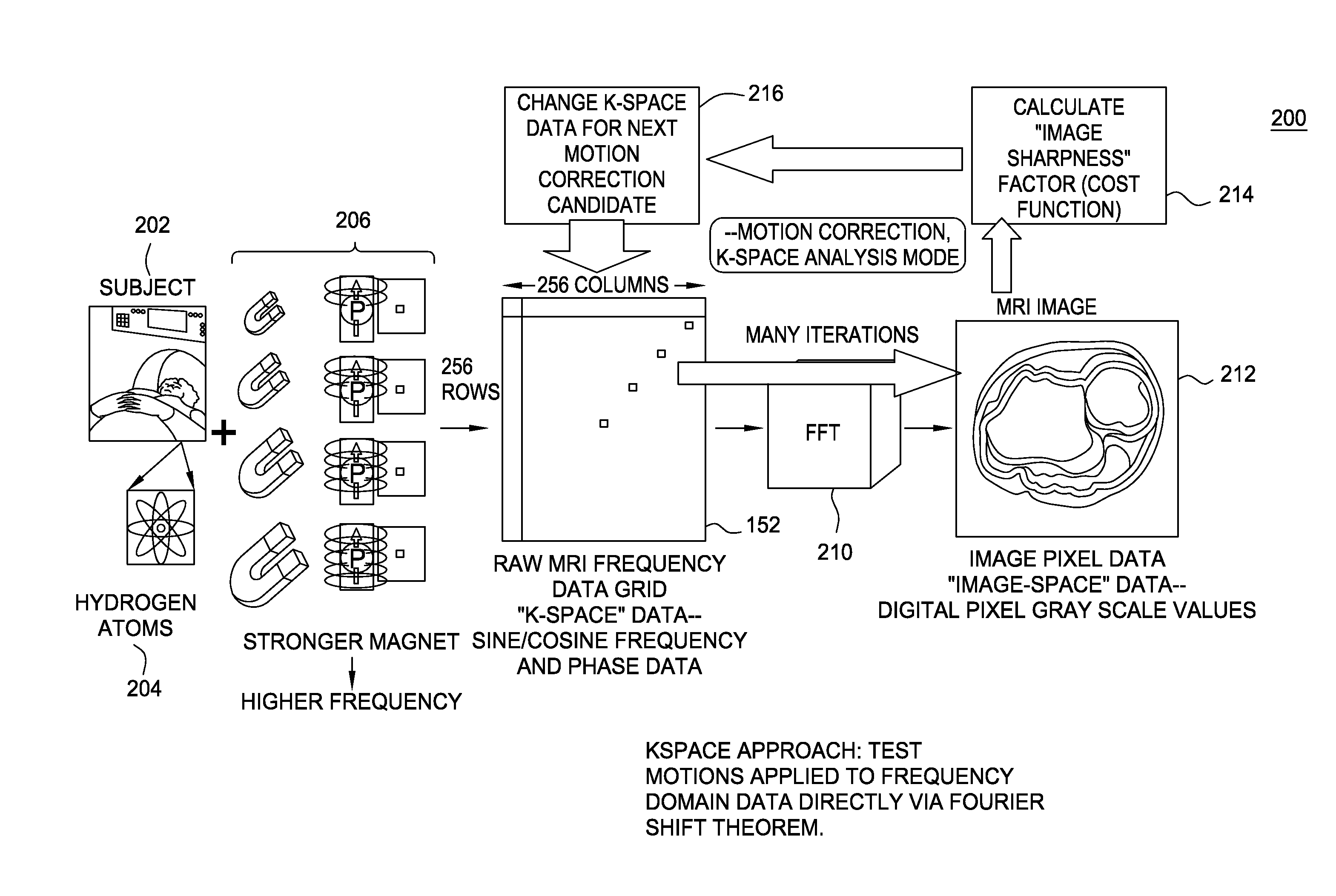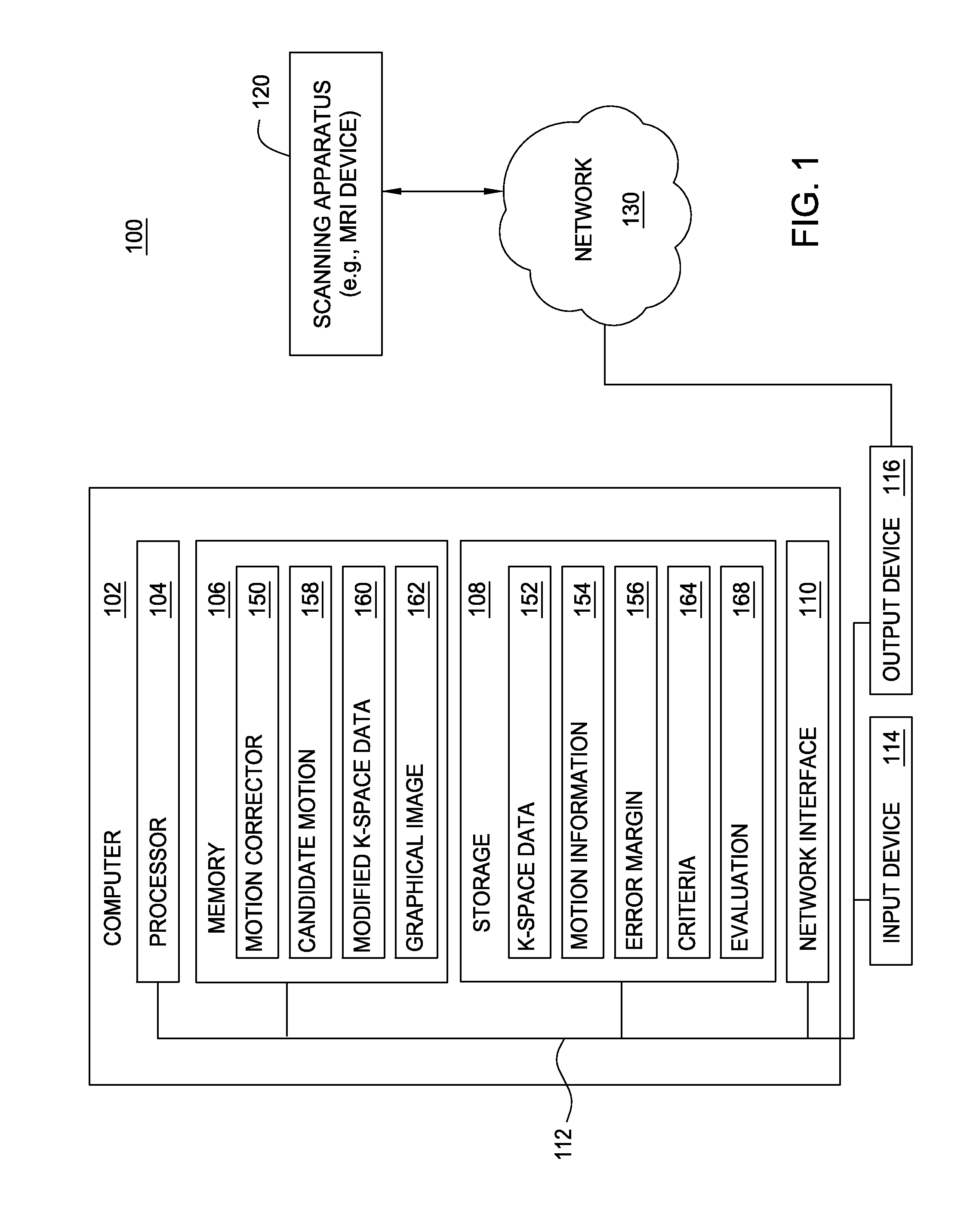Motion information capture and automatic motion correction for imaging systems
a technology of motion information and imaging system, applied in the field of motion correction, can solve the problems of large search space of possible patient motion, inability to search completely, and inability to take into account any physical measurement of patient motion,
- Summary
- Abstract
- Description
- Claims
- Application Information
AI Technical Summary
Benefits of technology
Problems solved by technology
Method used
Image
Examples
Embodiment Construction
[0016]Embodiments of the present invention generally compensate for motion by a subject during an MRI scan of the subject. A subject refers to any living organism or animal to which medical imaging technology may be applied. One embodiment of the invention provides a motion corrector. The motion corrector may determine a translational motion of the subject between a first point in time during the MRI scan and a second point in time during the MRI scan. Further, the motion corrector may reduce a search space for motion correction using the determined change. The search space for motion correction between the first point in time and the second point in time is a set of all possible patient motions that may have occurred between the first point in time and the second point in time. The motion corrector may use the reduced search space to generate graphical images from k-space (obtained from the MRI scan) data more efficiently and more accurately. k-space refers to a temporary image spa...
PUM
 Login to View More
Login to View More Abstract
Description
Claims
Application Information
 Login to View More
Login to View More - R&D Engineer
- R&D Manager
- IP Professional
- Industry Leading Data Capabilities
- Powerful AI technology
- Patent DNA Extraction
Browse by: Latest US Patents, China's latest patents, Technical Efficacy Thesaurus, Application Domain, Technology Topic, Popular Technical Reports.
© 2024 PatSnap. All rights reserved.Legal|Privacy policy|Modern Slavery Act Transparency Statement|Sitemap|About US| Contact US: help@patsnap.com










